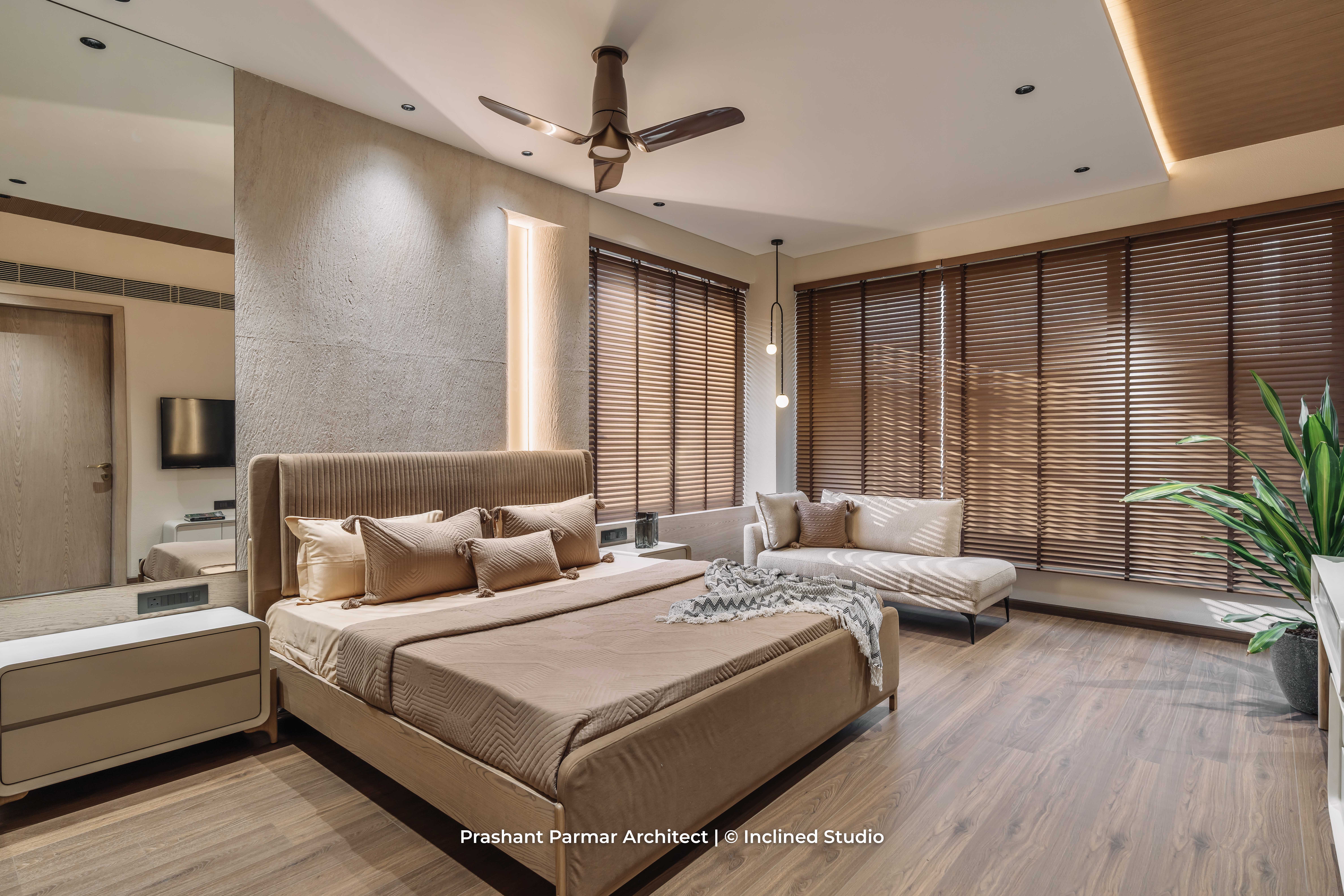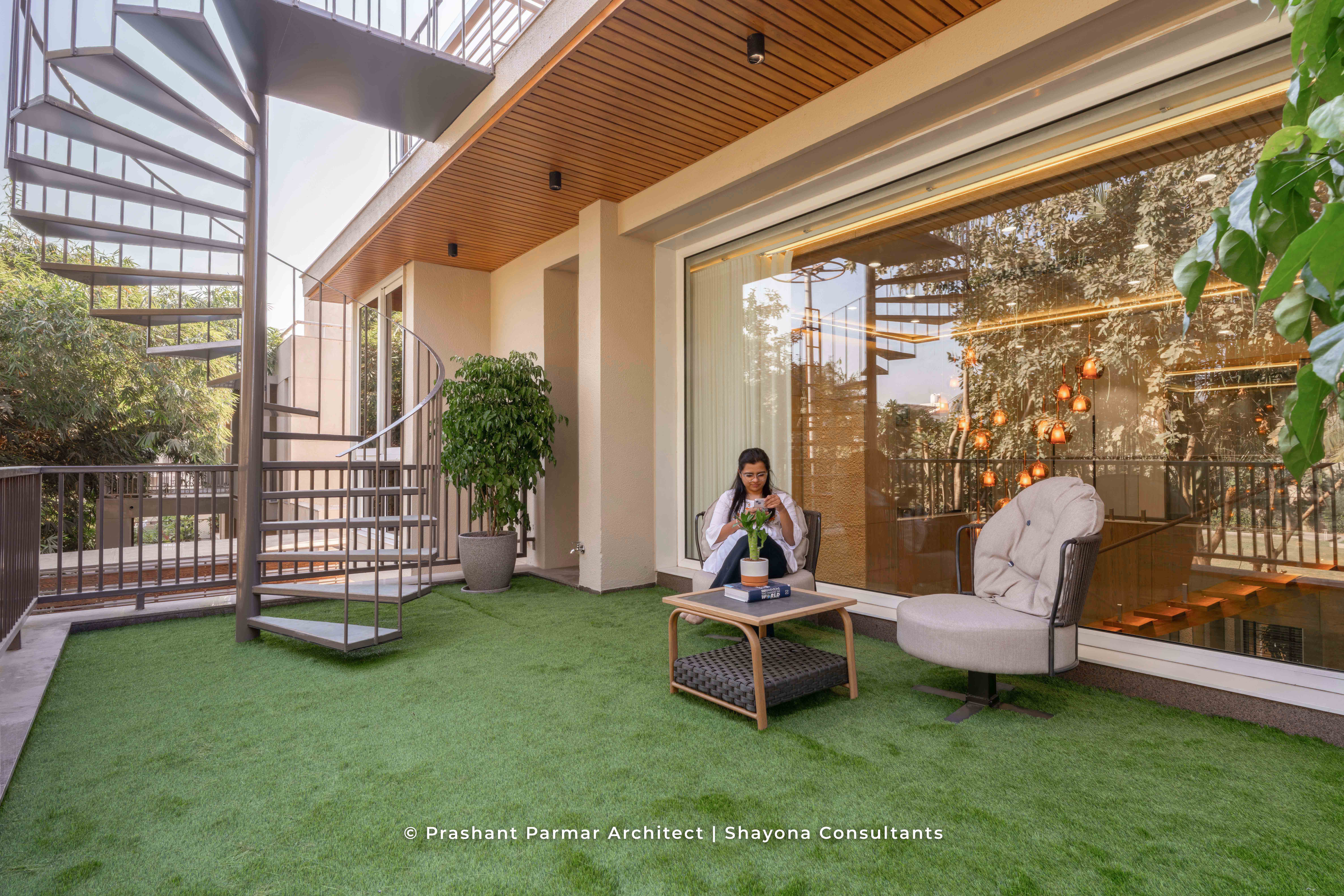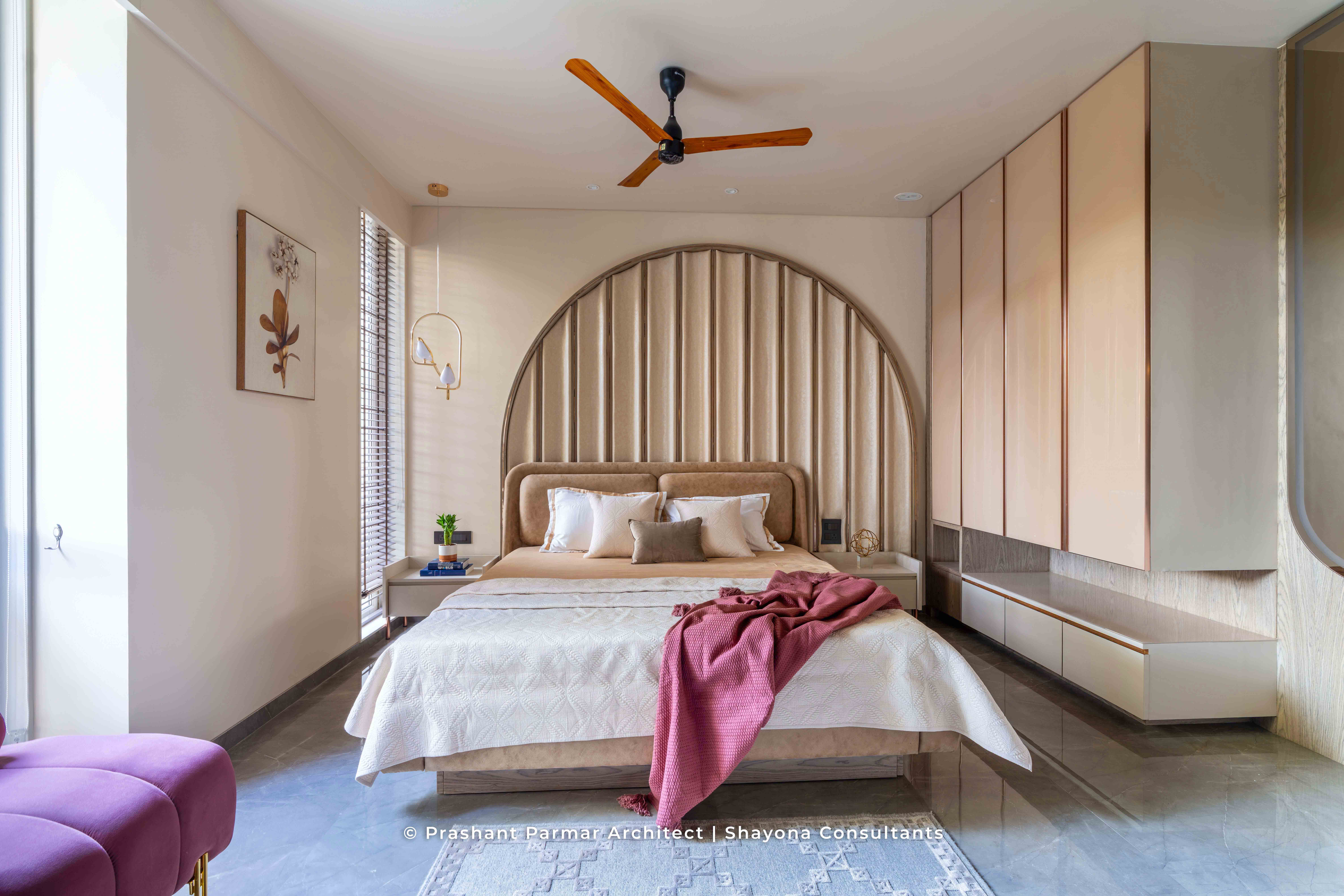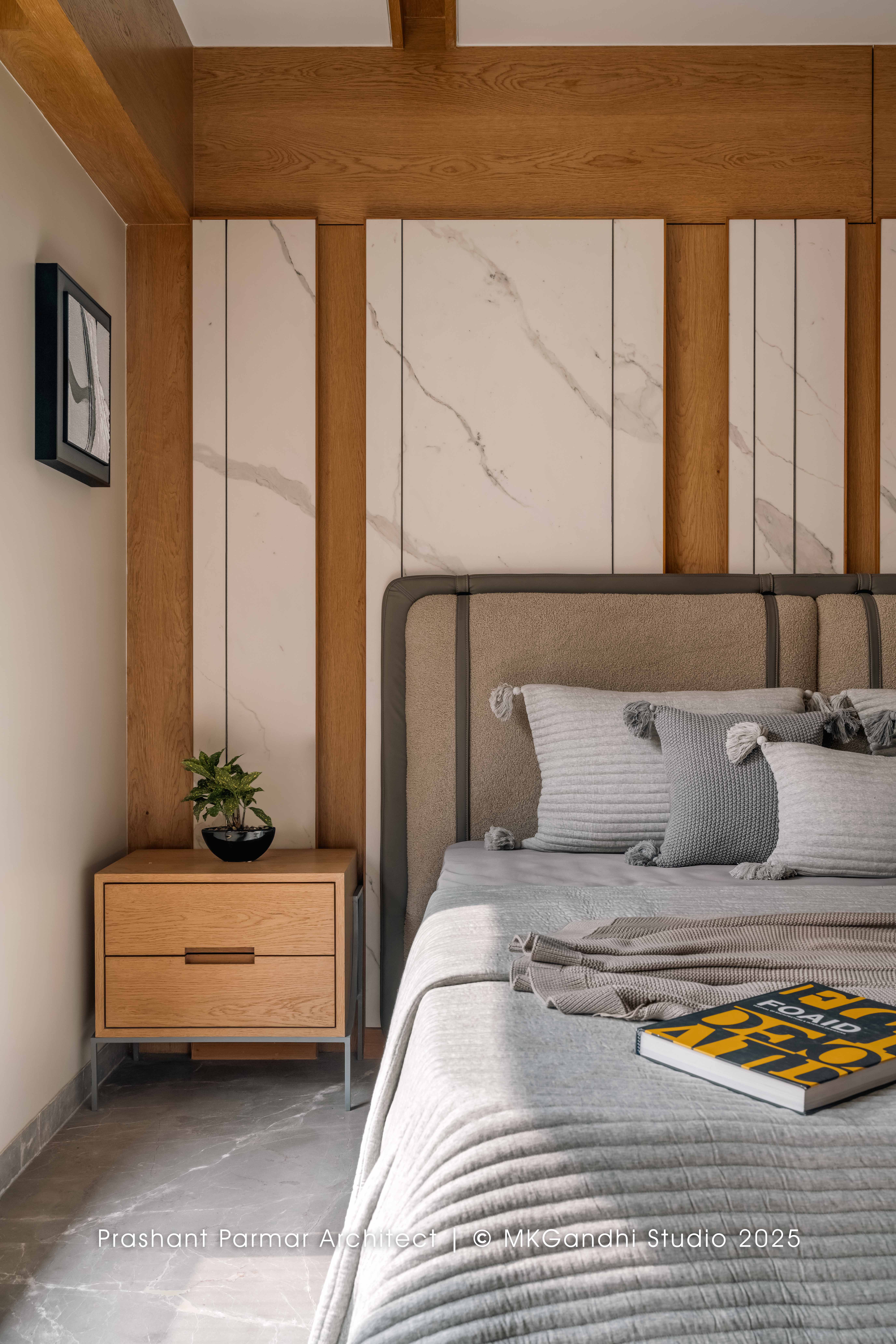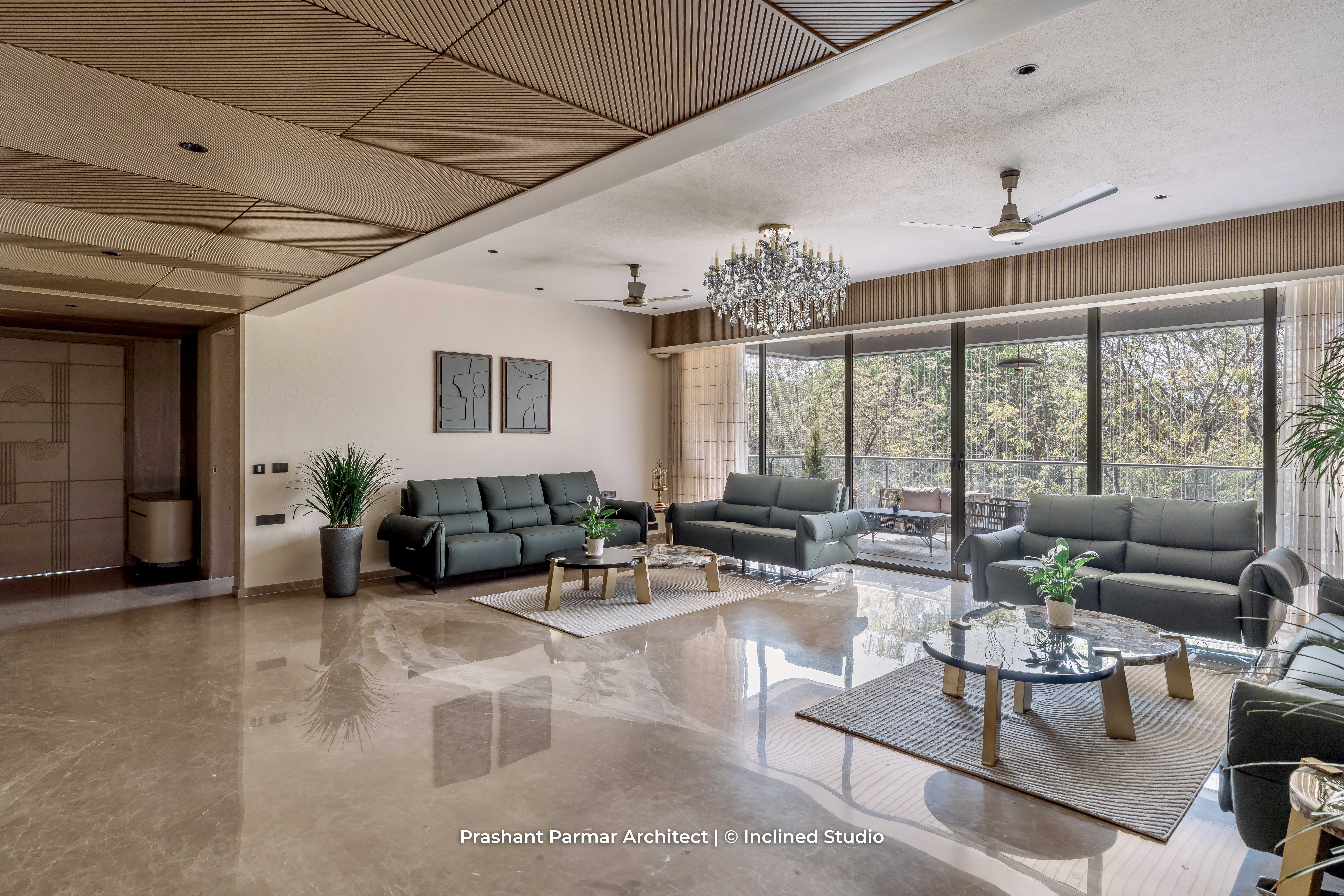20+ Types of Interior Design Styles You Need to Know Right Now
- Updated July 11, 2025
When you are decorating your home, you must have an understanding of trending interior design styles to hone your personal choices and create a perfect room.
Whether you are moving into a new apartment, renovating your old house, or just want to add a fresh look into your space, the right choice of interior design style can make all the difference.
Being the best interior designer in Baroda, we have in-depth understanding of interior design styles and trends. So, we have given an overview of some of the most popular interior styles and trends for your reference. Take a look and see what fits the best with your preferences:
Indian Original Interior Styles
Indian interior design styles are not just fashion trends but a vivid representation of diverse cultures.
The unique blend of religious, modern, and traditional designs showcases the country’s diverse atmosphere.
British Influence

During the British colonial period, Indian homes adopted an elegant style influenced by English decor. This included furniture reminiscent of English country homes, flowery wallpapers, and delicate China.
The British preference for balanced layouts and neatness was apparent in how these spaces were arranged, with a focus on practical yet stylish furniture. Dark wood, classy upholstery, and soft colors were commonly used, adding a touch of refined luxury to Indian interiors.
Indoor Hanging Chair

Indians are known for their swings and hanging chairs. Adding a hanging chair in your living room can give you a distinctive focal point and comfort.
You can also place a hanging chair or swing in the balcony to make it a peaceful haven.
Classic and Timeless Design Styles
The beauty of classic and timeless designs is in their historical significance. These styles have stood the test of time and offer a glimpse into the past while still being relevant in today’s modern homes.
From the elegance of traditional designs to the rustic charm of Mediterranean and French Country styles, each brings its own unique flavor to the table.
Traditional Interior Design Style

Traditional interior design is characterized by its emphasis on symmetry, rich color palettes, and a variety of textures and patterns. This style often incorporates antique furnishings, classic art pieces, and ornate decorative accents, creating a sense of elegance and comfort.
With roots stretching back to 18th and 19th century Europe, traditional design elements include intricate woodwork, sumptuous fabrics like silk and velvet, and a cohesive, harmonious aesthetic that exudes timelessness.
Mediterranean Interior Design Style

Mediterranean interior design invokes the warm, sun-drenched colors of the region, incorporating earthy tones like terracotta, ochre, and azure. This style is known for its rustic textures, wrought iron accents, and heavy, ornately carved wooden furniture.
Arches, columns, and mosaic tile work are also hallmark features, along with accessories that celebrate the outdoors, such as pottery, lanterns, and woven rugs, creating a relaxed, welcoming ambiance that echoes the tranquil beauty of the Mediterranean coastline.
French Country Interior Design Style

The French Country interior design style is effortlessly elegant, blending the rustic charm of rural France with refined details. It is characterized by soft color palettes, with splashes of floral patterns, toile, and gingham, grounded by natural materials like distressed wood and stone.
Furniture pieces are often vintage or antique, with graceful lines and natural, aged finishes. The French Country style achieves a balance between beauty and comfort, offering a lived-in, cozy feel that is both stylish and functional.
Modern and Contemporary Design Styles
In contrast to the more ornate and historical aspects of classic design styles, modern and contemporary designs offer a fresh perspective focused on minimalism, clean lines, and a monochromatic color palette.
These styles reflect the innovations of the 20th century and beyond, emphasizing form, function, and simplicity.
Modern Interior Design Style

Modern interior design is rooted in the early to mid-20th century and is known for its clean, unadorned aesthetic. This style emphasizes functionality and simplicity, with a focus on materials like steel, glass, and reinforced concrete.
Color schemes are often neutral, allowing the architectural elements and furniture – often featuring sleek, geometric shapes – to take center stage. Artwork and accessories are used sparingly, and natural light is a key component, creating spaces that feel open, airy, and inherently modern.
Contemporary Interior Design Style

Contemporary interior design represents the here and now. It is fluid and constantly evolving to reflect the latest trends in architecture and design, making it inherently dynamic and flexible.
Contemporary spaces favor open layouts, clean lines, and a neutral color palette punctuated by bold accents. This design style often incorporates the latest materials and innovations, blending form and function in new and interesting ways. Furniture pieces are statement-makers with a focus on comfort and sustainability, reflecting a blend of aesthetics from various eras.
Minimalist Interior Design Style

Minimalist interior design takes the “less is more” approach to an extreme, focusing on simplicity, clean lines, and a monochromatic color scheme. This style is characterized by minimal furnishings and accessories, with an emphasis on functionality and uncluttered spaces.
Natural light, open spaces, and a neutral color palette are key components of minimalist design, creating serene, tranquil environments. The minimalist style celebrates the beauty and simplicity of form, transforming spaces into practical and visually striking works of art.
International Influence Design Styles
The influence of cultural heritage and international trends on interior design has led to the creation of unique styles that represent a blend of traditional elements and modern aesthetics. These styles not only enhance the visual appeal of spaces but also incorporate functionality and comfort, making them ideal for creating personalized and inviting environments.
Among these, Scandinavian, Asian Zen, and Bohemian styles stand out for their distinctive characteristics and design principles.
Scandinavian Interior Design Style

Scandinavian interior design is synonymous with simplicity, minimalism, and functionality. Originating from the Nordic countries, this style emphasizes clean lines, light colors, and natural materials like wood and leather. The use of a neutral color palette comprising whites, beiges, and soft grays, combined with the strategic use of natural light, creates an atmosphere of warmth and spaciousness.
Scandinavian interiors often feature a mix of modern and mid-century furniture, providing a clean and uncluttered look. Soft textiles and cozy accents, such as plush rugs and throw pillows, add comfort and warmth, making the minimalist spaces inviting and livable.
Asian Zen Interior Design Style

Asian Zen interior design is inspired by the principles of Zen Buddhism, focusing on creating a sense of harmony, balance, and tranquility in the home. This style emphasizes simplicity, natural materials, and a connection with nature. Key elements include the use of soft, neutral colors, organic shapes, and minimalistic furniture.
Spaces are kept open and airy, with decorative accents kept to a minimum to avoid clutter. The incorporation of natural elements, such as wood, stone, and water features, alongside indoor plants, further enhances the serene and peaceful atmosphere. Asian Zen interiors often feature sliding doors or screens, tatami mats, and carefully selected artwork that reflects natural scenes or abstract concepts.
Boho – Bohemian Interior Design Style

Bohemian, or Boho, interior design is characterized by its eclectic and unconventional approach. This style embraces a free-spirited aesthetic that combines elements from different cultures and time periods. Boho interiors are known for their vibrant colors, diverse textures, and a mix of patterns. The use of vintage and handmade items, such as macramé, tapestries, and globally inspired textiles, adds layers of depth and personality to the space.
Furniture is often a mix of different styles, with an emphasis on comfort and relaxation. Plants, ethnic-inspired decor, and unconventional displays of art and collectibles further contribute to the Boho vibe, creating spaces that are visually stimulating and uniquely personal.
Eclectic and Unique Design Styles
Eclectic and unique design styles break away from traditional norms and offer an opportunity to blend various influences, creating spaces that are not only visually compelling but also deeply personal. These styles allow for the expression of individuality and creativity, often resulting in rooms that are vibrant, dynamic, and full of character.
Among the diverse options in this category, Eclectic, Art Deco, and Hollywood Glam stand out for their distinctive flair and appeal.
Eclectic Interior Design Style

Eclectic interior design is all about the artful mixing of styles, textures, and colors to create a cohesive and visually appealing space. This style encourages experimentation and personal expression, allowing designers to curate spaces that reflect the homeowner’s tastes and interests. The key to achieving a successful eclectic design is balance – carefully selecting and placing items to ensure the space feels harmonized, not chaotic.
Furniture and decor from various periods and styles can coexist, provided there is a unifying element, such as color or texture. Bold patterns, vibrant colors, and a variety of textiles are commonly used, but the overall composition should remain thoughtful and intentional.
Art Deco Interior Design Style

Art Deco is a glamorous and sophisticated style that emerged in the 1920s and 1930s, known for its geometric shapes, bold colors, and luxurious materials. This style is all about opulence and elegance, featuring streamlined furniture, metallic accents (such as chrome, gold, and brass), and high-contrast color schemes.
Mirrored surfaces, lacquered wood, and sleek lighting fixtures contribute to the sleek, modern aesthetic. Decorative elements often include motifs inspired by nature, geometry, and ancient civilizations, adding layers of interest and sophistication. Art Deco interiors radiate confidence and luxury, making them ideal for creating statement-making spaces.
Hollywood Glam Interior Design Style

Hollywood Glam, also known as Hollywood Regency, is a style that exudes luxury, drama, and opulence, drawing inspiration from the golden age of Hollywood cinema. This design approach focuses on creating spaces that are bold and theatrical, with an emphasis on plush fabrics, shimmering finishes, and dramatic color palettes.
Velvet, satin, and fur are commonly used textiles, complementing furniture pieces that are both elegant and extravagant. Mirrored surfaces, crystal chandeliers, and metallic details (such as gold or brass) add a touch of glamour, while bold artwork and statement accessories complete the lavish look. Hollywood Glam interiors are all about indulgence and sophistication, perfect for those who love to live in the lap of luxury.
Comfort and Coziness Design Styles
Comfort and coziness in interior design evoke a warm, inviting atmosphere. Emphasizing soft textures, comforting colors, and vintage elements, these design styles transform homes into serene havens.
Whether incorporating the charming imperfections of shabby chic, the natural materials of rustic design, or the bright and airy feel of coastal interiors, each style brings its unique approach to creating spaces that welcome relaxation and leisure.
Shabby Chic Interior Design Style

Shabby chic interior design marries elegance with comfort, featuring furniture and decor that boast a well-loved and lived-in look. This style is characterized by its use of vintage or antique items, often repurposed or upcycled to add a sense of history and charm.
Soft pastels, muted tones, layered textures, and an abundance of lace, floral patterns, light, and gauzy fabrics define the aesthetic, creating a romantic and whimsical atmosphere. Distressed wood, ornate details, and a palette that emphasizes whites, creams, and soft pastels are hallmark characteristics, making shabby chic interiors feel both cozy and chic.
Rustic Interior Design Style

The rustic interior design style leans heavily on natural inspiration, bringing the tranquil, raw beauty of the outdoors inside. Central to rustic design are rugged, untreated woods, stone, and other natural materials that emphasize an organic, unrefined aesthetic.
Furniture and decor in this style often feature a heavy, solid construction and are complemented by textiles with a natural look and feel, such as linen, burlap, and wool. The color palette is earthy, with hues of brown, beige, forest green, and terracotta taking center stage. Combining these elements creates a cozy, grounded space that exudes warmth and simplicity.
Coastal Interior Design Style

Coastal interior design conjures the breeziness of the beach and the serenity of the sea, even if the ocean is miles away. Light plays a pivotal role in coastal interiors, with spaces designed to be bright, airy, and sun-drenched. The color palette draws from sand, sea, and sky, featuring shades of blue, green, beige, and white.
Natural materials like wood, rattan, jute, and linen are prevalent, alongside coastal motifs such as shells, driftwood, and nautical stripes. Furniture is casual and comfortable, promoting a laid-back lifestyle that echoes the relaxation found at the seaside.
Historical Influence Design Styles
Design styles inspired by historical periods provide a timeless appeal, blending rich details and textures with classic forms. Let’s explore a few notable historical influence design styles that continue to captivate the imagination and inspire contemporary interiors.
Art Moderne Interior Design Style

Art Moderne, or Streamline Moderne, developed in the United States in the early 1930s, is distinguished by its emphasis on streamlined, aerodynamic forms reflecting speed and efficiency. This style echoes the optimism and rapid technological advancements of the era. Art Moderne interiors feature smooth, rounded edges with a preference for horizontal lines.
Furniture in this style is often characterized by its sleek, curvilinear forms, made from materials such as chrome, glass, and shiny fabrics, to convey a sense of luxury and progress. The color palette leans towards neutrals contrasted with bold accents, embodying a chic and polished aesthetic. Key elements include mirrored surfaces, geometric patterns, and nautical motifs, emphasizing a clean and uncluttered space that exudes elegance and sophistication.
Mid-Century Interior Design Style

The Mid-Century interior design style, flourishing from the mid-1940s through the 1960s, is renowned for its seamless integration of form and function. Celebrating the simplicity and the natural world, it brings together organic shapes with minimalist aesthetics. Wood is a predominant material, alongside metal and glass, to create furnishings that are as practical as they are stylish. This style features a vibrant palette ranging from neutrals to bold hues, reflecting the optimistic spirit of the post-war era.
Homes styled in this manner often include iconic furniture pieces characterized by clean lines, gentle organic curves, and a love for different materials and textures. Large windows and open floor plans are pivotal, emphasizing a connection with nature and encouraging light-filled spaces. The Mid-Century style remains a cornerstone in the philosophy that design should be accessible and enhance everyday living.
Victorian Interior Design Style

Victorian interior design, named after Queen Victoria’s reign from 1837 to 1901, is celebrated for its ornate details, rich colors, and intricate patterns. This style is characterized by an opulent and luxurious aesthetic, with rooms often laden with heavy textiles, floral wallpapers, and elaborate furniture.
Dark wood is prevalent in Victorian design, with pieces like claw-foot tables and tufted armchairs prominently featured. Colors are deep and saturated, including burgundy, navy, and forest green, complemented by softer pastels to create a sumptuous and layered look. Accessories and decor in a Victorian home might include grandiose mirrors, stained glass, and an assortment of antiques, all contributing to a sense of grandeur and sophistication. Despite its complexity, the Victorian style creates a warm and inviting atmosphere, reflecting a bygone era’s charm and elegance.
Bold and Dramatic Design Styles
Bold and dramatic design styles make a statement, utilizing contrast, color, and scale to leave a lasting impression. These styles are not afraid to push boundaries and often blend different elements to create unique and memorable spaces.
Industrial Interior Design Style

Industrial design draws inspiration from the raw and unfinished look of warehouses and factories, embracing structural elements that are usually hidden. Exposed brick, concrete floors, and visible ductwork typify this style, celebrating a blend of form and function that emphasizes utilitarian simplicity. Furniture and decor often feature a mix of wood and metal, with a color palette that leans towards neutral earth tones to complement the natural materials.
Industrial spaces commonly employ open floor plans to enhance the sense of spaciousness. Lighting fixtures in this style are typically made of metal and often resemble old factory equipment, contributing to the overall aesthetic of repurposed functionality. Despite its starkness, the industrial style offers a rugged elegance and a cozy atmosphere through the use of warm textures and soft furnishings.
Japandi Interior Design Style

Japandi, a fusion of Japanese and Scandinavian design philosophies, marries the rustic minimalism of Scandinavian design with the traditional elegance of Japanese aesthetics. This style is characterized by a respect for craftsmanship, natural materials, and the beauty of simplicity. The color scheme is subdued, featuring soft neutrals and pastel hues to create a serene and calming environment.
Japandi interiors prioritize functionality and simplicity, with clutter-free spaces accentuated by handcrafted objects and organic forms. Furniture pieces in this style blend sleek, modern lines with traditional Japanese influences, such as low-profile platforms and sliding doors. The result is a tranquil, harmonious space that fosters mindfulness and simplicity, embodying the essence of ‘less is more.’
Transitional Interior Design Style

The transitional design merges the best of traditional and contemporary styles, achieving a timeless middle ground that boasts both warmth and sophistication. This style is all about balance, blending the ornate and classic elements of traditional design with the clean lines and minimalist features of contemporary decor.
Material and texture play a crucial role, with a mix of plush fabrics and smoother surfaces like wood, glass, and metal. The color palette tends toward neutral shades to create a soothing backdrop, allowing for subtle injections of color through accessories and art.
Transitional furniture features simple silhouettes with an emphasis on comfort and understated elegance. By harmonizing diverse design elements, transitional interior design offers a refined and inviting atmosphere that appeals to a wide range of tastes.
Conclusion
When it comes to interior design, the multitude of styles available can be both inspiring and overwhelming. However, the key to successfully transforming your space lies in understanding the essence of each style and how it aligns with your personal taste, lifestyle, and the atmosphere you wish to create.
From the sleek and functional approach of Modern and Scandinavian styles to the rich textures and vibrant colors found in Bohemian and Mediterranean aesthetics, each design style offers a unique way to express yourself through your living environment.
In the end, your home should be a reflection of who you are. Whether you’re captivated by the clean lines of Japandi, the elegance of French Country, or the warmth of Rustic interiors, there’s no wrong choice. Each style has its charm and can be adapted to suit your individual needs and preferences.
If you are still confused about different styles and want to ensure the best results for your home, trust Shayona Consultant. We are the best interior designer in Baroda, revolutionizing the architecture and interior design industry for years. Get in touch with our team and take the first step towards achieving your dream space!




